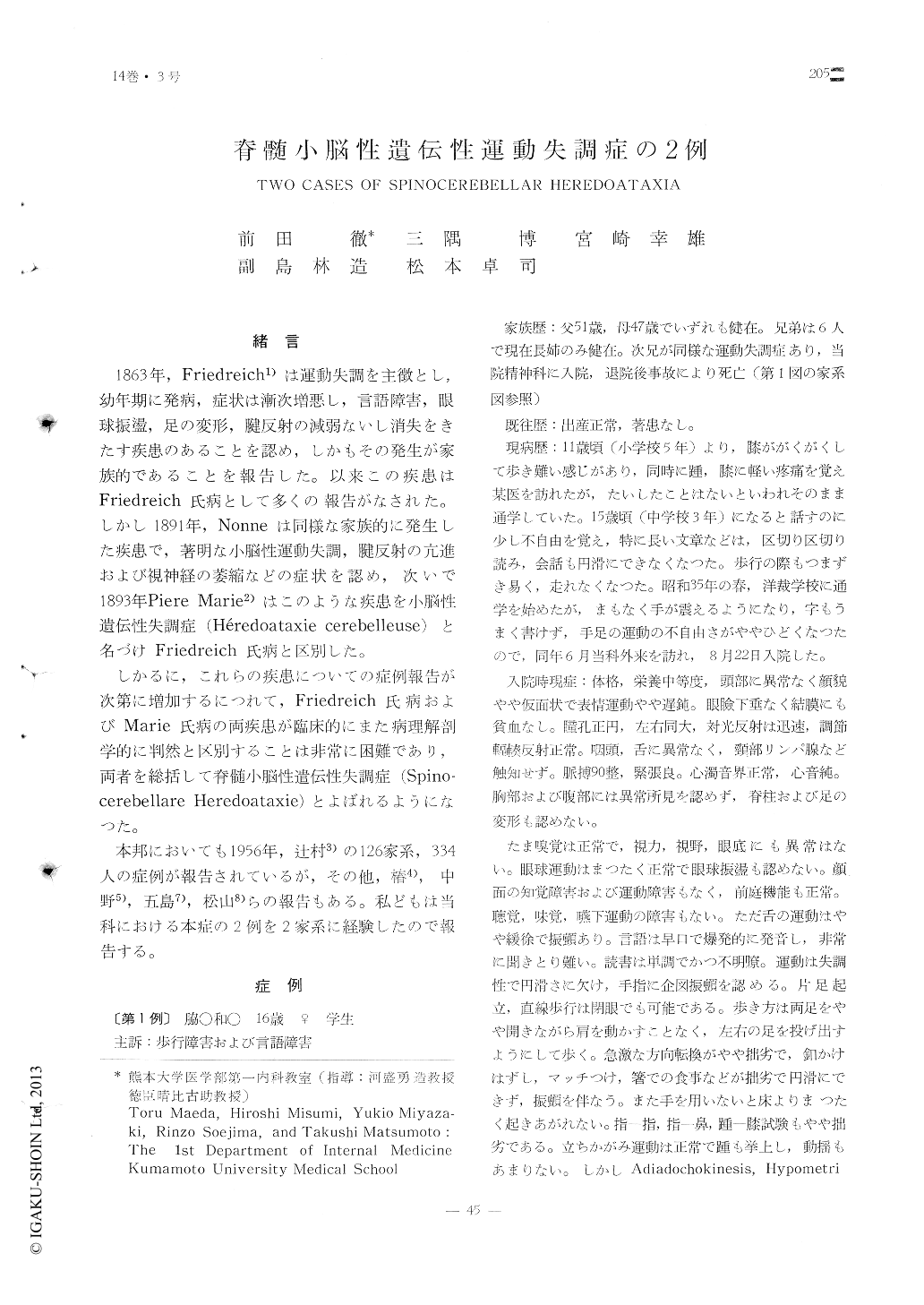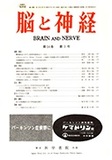Japanese
English
- 有料閲覧
- Abstract 文献概要
- 1ページ目 Look Inside
緒言
1863年,Friedreich1)は運動失調を主徴とし,幼年期に発病,症状は漸次増悪し,言語障害,眼球振盪,足の変形,腱反射の減弱ないし消失をきたす疾患のあることを認め,しかもその発生が家族的であることを報告した。以来この疾患はFriedreich氏病として多くの報告がなされた。しかし1891年,Nonneは同様な家族的に発生した疾患で,著明な小脳性運動失調,腱反射の亢進および視神経の萎縮などの症状を認め,次いで1893年Piere Marie2)はこのような疾患を小脳性遺伝性失調症(Heredoataxie cerebelleuse)と名づけFriedreich氏病と区別した。
しかるに,これらの疾患についての症例報告が次第に増加するにつれて,Friedreich氏病およびMarie氏病の両疾患が臨床的にまた病理解剖学的に判然と区別することは非常に困難であり,両者を総括して脊髄小脳性遣伝性失調症(Spino—cerebellare Heredoataxie)とよばれるようになつた。
Two cases of spinocerebellar heredoataxia were observed lately in our internal depart-ment. The report on above runs as follows.
1. One, 16 years old female, who began to have ataxia and disturbance of speech when she was 11 years old showed explosive speech, ataxic walk, intention tremor, adia-dochokinesia, hypometria and accentuation of tendon reflex at admission. One brother and one sister were attacked with same dis-ease.
2. The other, 20 years old male, fell ill with finger tremor and showed not any here-ditary tendency.
It may be thought that 2 of them were nearly hereditary cerebellar ataxia (Marie's form), judging from onset age, hereditary tendency and some of the clinical symptomes.

Copyright © 1962, Igaku-Shoin Ltd. All rights reserved.


